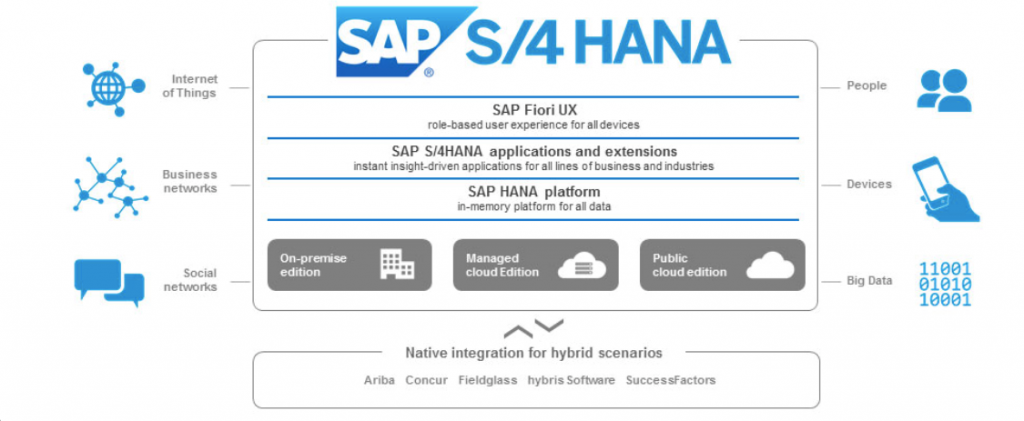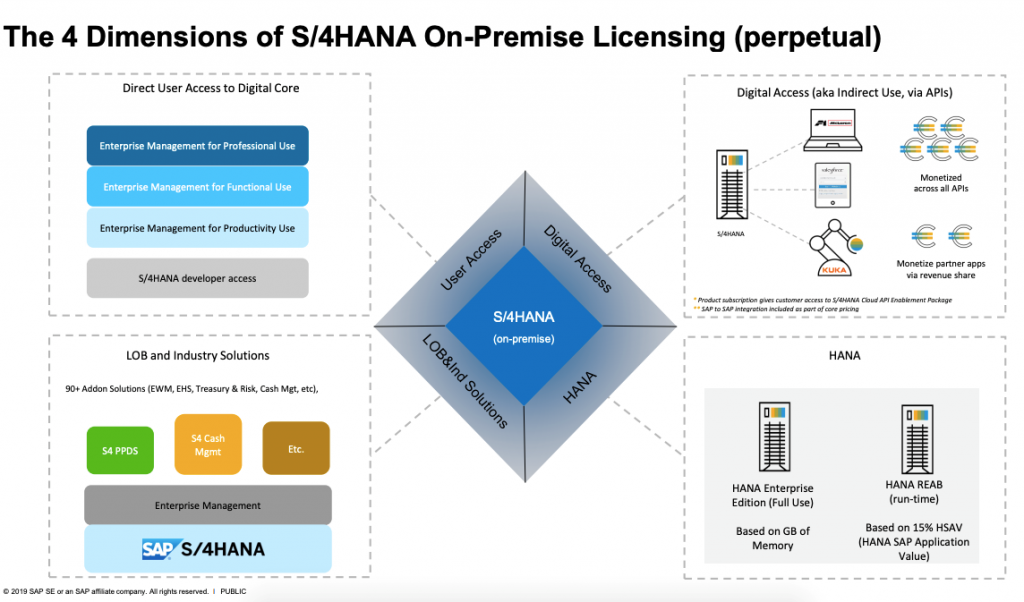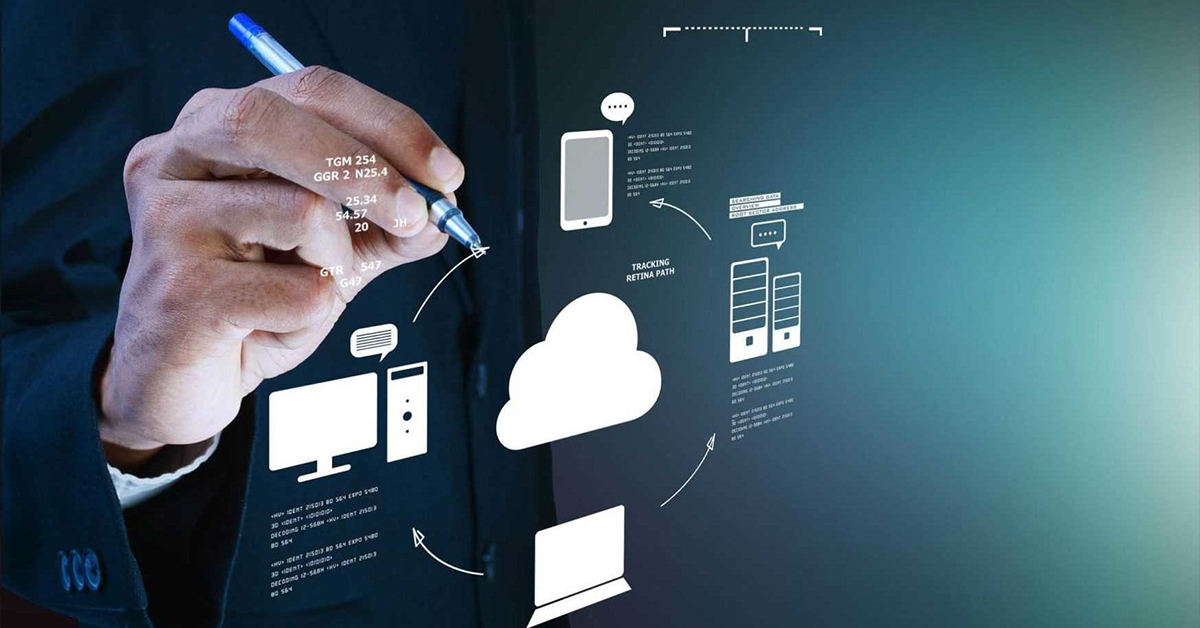- About Us
- Products
- SAP Products
- SAP S/4HANA
- SAP S/4HANA CLOUD
- CRM and Customer Experience
- SAP S/4HANA Fashion and Vertical Business
- Human Capital Managament
- SAP IFRS
- IFRS 16 + Real Estate
- Development and Integration
- Digital Supply Chain
- Easy Collection Tracking Through
- Closing Cockpit
- SAP S4 POS Data Transfer and Audit
- SAP logistics
- Prodea Products
- BPM Solutions
- Services
- About Us
- Products
- SAP Products
- SAP S/4HANA
- SAP S/4HANA CLOUD
- CRM and Customer Experience
- SAP S/4HANA Fashion and Vertical Business
- Human Capital Managament
- SAP IFRS
- IFRS 16 + Real Estate
- Development and Integration
- Digital Supply Chain
- Easy Collection Tracking Through
- Closing Cockpit
- SAP S4 POS Data Transfer and Audit
- SAP logistics
- Prodea Products
- BPM Solutions
- SAP Products
- Services
- Sectors
- References
- Blog
- Career
- Contact Us
Blog- Prodea Consulting
- Blog
- SAP S/4 HANA ERP SOLUTION

When enterprises reach a certain size, they need Enterprise Resource Planning (ERP) solutions that enable integrated management of an organisation's processes to manage complex business processes. Competition, rapidly changing market conditions and technology put digitalisation at the top of the agenda of businesses. SAP, the leader of the enterprise resource planning market in the world and in Turkey, digitalises the logistics, finance and human resources processes of businesses end-to-end with processes based on the best business practices of SAP S/4 HANA, the ERP solution.
SAP S/4 HANA
SAP S/4 HANA (SAP Business Suite 4 SAP HANA) is the name of SAP's latest solution in the field of enterprise resource planning (ERP). SAP's previous ERP solution was called SAP ECC.

SAP S/4 HANA product uses SAP's "HANA" database with "in-memory" technology in the background. HANA database has the ability to interpret very large data within seconds with the technology it uses.
We observe together that the concept of data is gaining importance day by day and data is now recognised as one of the most important resources. "Predictive" applications come to the fore in order to use the data obtained. For the effective use of data in this way, the HANA database offers a unique infrastructure to its users.
The interfaces developed with SAP S/4 HANA are designed with "Fiori", SAP's HTML5-based development tool. With the new interface, it is aimed both to increase the user experience and to make the systems mobile. The HTML5 technology used is a technology called "responsive design", which adjusts the screen according to the device used.
SAP ERP product has open source code. You will have all open codes like all individuals and organisations that purchase SAP ERP product.
"SAP S/4 HANA Enterprise Management", which has the basic ERP functions in the core of SAP S/4 HANA, SAP's latest version ERP product, is licensed on a user basis. With your purchase, you will have the right to use all modules that come with SAP S/4 HANA Enterprise Management.
As an SAP S/4 HANA user, you will also have the right to use SAP's data warehouse (BW - Business Warehouse), Solution Manager and portal products free of charge.
Although SAP S/4 HANA has a different database architecture and new generation HTML5 based user interfaces, it continues to use the architecture of the previous ERP version SAP ECC.
In summary, a user using the old version will find most of the screens they use in SAP S/4 HANA. Although the tables of the basic modules are completely changed with the SAP HANA database change, thanks to SAP's unique architectural design, a code written 20 years ago can still work when moved to the new system. In this way, SAP offers its customers a sustainability that is not available in any competitor in the world.SAP S/4 HANA consists of the following cornerstones;
SAP S/4HANA Enterprise Management SAP S/4HANA Enterprise Management consists of basic ERP functions. It is licensed on a user basis. It is also called "digital core". Although the name SAP S/4 HANA corresponds to a broader solution set, it is generally used for SAP S/4HANA Enterprise Management.
SAP S/4HANA LoB Products SAP S/4HANA LoB products are products that extend the functions of SAP S/4HANA Enterprise Management, enabling you to manage different needs that arise in the work of your business. These products are additionally licensed with different metrics.
SAP S/4HANA LoB Products for Specific Industries: SAP S/4HANA LoB Products for Specific Industries are sectoral solutions developed by SAP for different sectors. They are products that extend the functions of SAP S/4HANA Enterprise Management. These products are additionally licensed with different metrics.
SAP S/4 HANA Enterprise ManagementSAP S/4HANA Enterprise Management covers the basic functions required by an enterprise. SAP S/4HANA Enterprise Management, which is licensed on a user basis, is called Digital Core by SAP. SAP S/4HANA Enterprise Management functions are grouped as in the table below.

SAP S/4 HANA Enterprise Management product consists of the following modules.
- Asset Management
It provides monitoring of technical unit and technical equipment inventory and management of incidental and planned maintenance operation processes. You can define measurement points and collect meter information from the field. The maintenance module controls the stocking and consumption of maintenance materials in integration with inventory management. It ensures that maintenance costs are generated and automatically reflected to the relevant cost centres. It also allows the management of external operations related to maintenance. Manages common calibration processes with the quality module. Enables arrangements for occupational health and safety.
- Finance
SAP S/4 HANA Finance consists of cost centre accounting, profit centre accounting, product costing, profitability analysis, general accounting, vendor accounting, customer accounting, budget management and fixed asset sub-modules..
Financial Accounting
It enables end-to-end formal accounting (General accounting, vendor accounting and customer accounting), fixed asset inventory and accounting, preparation of IFRS reports. It allows more than one ledger to be followed. With Revenue Accounting, you can track contracts within the scope of IFRS15. Cash management, budget management are sub-functions of financial accounting.
Cost and Management Accounting
It enables the management of the processes of analysing all costs arising from the operation of the business. Data subject to cost analysis is transferred from other modules. The Cost and Management Accounting (CO) module synthesises the data it receives and transforms them into meaningful data suitable for analysis. The basic elements of this module are as follows.
- Types of Costing in Cost Accounting: It is the section where income and expense structures subject to cost accounting are determined. Income and expense account balances through expense types feed cost accounting and constitute the source of reports.
- Cost Location Accounting: In Cost Type Accounting, cost elements are tracked on account basis, while in Cost Location Accounting, cost elements are tracked on the basis of cost locations (business unit, production location, warehouse, location, etc.). At the same time, planning can also be made on the basis of cost locations. Production costs can be created and cost distribution can be made on the basis of Main Production Location, Auxiliary Production Location, etc. In addition, data such as labor hours and machine hours can be monitored regarding production. Special expenses can be recorded using the order section.
- Product Cost Accounting: The planned costs of materials can be tracked, actual costs can be calculated at the end of the period, and detailed analysis of the costs of materials can be made. While the costs of products are tracked according to the cost prices determined during the period, they can be converted into actual costs at the end of the period.
- Profitability Analysis: Profitability analysis can be made according to many variables such as product, customer, sector; income / expense tables can be prepared on the basis of these variables.
- Human Resources
It provides management of organizational structure, recruitment, placement and assignment, payroll and personal rights. In HR time management, you can monitor and approve your employees' activities via timesheet.
- Manufacturing
It enables the management of material requirements planning (MRP), long-range production planning, production scheduling (rough capacity planning), serial and batch production, production tracking, engineering change management processes. Supports production routing functions such as JIT (Just-in-time) and Kanban. Provides inbound and outbound functions for JIT. Manages contract manufacturing operations. Supports configured product management. It has Product Structure Management and document management functions.
Quality Management
It ensures the management of quality control processes at each step of the Input - Process - Output stages, tracking customer complaints, providing feedback to vendors, and monitoring corrective and preventive actions.
- R&D / Enginering
It has Product Development Foundation and Enterprise Portfolio and Project Management functions. Product Development Foundation manages the definition of product trees and supports configured product management. It has Product Structure Management and document management functions. With change management functions, you have the chance to track a change from master data to production.
Project Management
It enables the management of the processes of planning projects, carrying out and tracking project activities, monitoring budgets and actual costs. In the SAP system, all logistics activities such as sales, purchasing and production can be tracked on a project basis. By integrating with the investment module, it is also possible to evaluate each investment as a project and thus manage the entire process.
- Sales
It enables management of pre-sales opportunity management, pricing, ordering, sales and invoicing processes. Customer premium calculations, commission and incentive management are tracked with Settlement Management infrastructure. The sales module enables the management of the sales cycle of services and solutions together (Business solution portfolios, service contracts). Warranty tracking in the service process is managed integrated with service management.
- Service
- It enables the management of after-sales service and warranty processes. Workforce Management, one of its sub-functions, provides an integration layer with third party field management systems. It has a standard integration with SAP Field Service applications. Customer Interaction Center provides a 360-degree view of service customers. It allows customer representatives (Agents) to access all data on one screen.
- Sourcing & Procurement
It enables the management of supplier master data management, material requirement planning according to demand or need, determining supply sources, quotas, procurement (request, offer, contract, order), catalog, service procurement, invoice control (cost of goods affecting the cost - freight, etc.) processes. Budget control can be realized in the procurement process, procurement documents can be put into the approval mechanism. Supplier premium agreements and supplier evaluation are tracked in SAP.
SAP supports consignment, contract and 3rd party procurement scenarios other than direct procurement. It has a standard integration layer for sending orders to 3rd party systems, order confirmations from 3rd party systems, service usage of delivery information and received goods information of the order to 3rd party systems. It also has invoice integration functions for receiving supplier invoices via EDI and sending the status of invoices to suppliers.
- Supply Chain
Manages the main functions of Inventory Management, delivery and transportation, Warehouse Management, Availability control.
Provides management of material movements, stocktaking, recyclable packaging management scenarios.
Checks whether the need for availability control material can be met at the points where the need arises, and re-terminates open needs according to the last availability status with the Backorder Processing function.
Picking, placing and packing functions are used in the delivery process. In the transportation process, transportation is planned for deliveries. Transportation contract, pricing, transportation procurement needs, costs and hazardous material management can be managed on the system.
- Warehouse Management
It ensures the management of the processes of in-store shelf monitoring, receiving products into the warehouse, removing products from the warehouse, and carrying out warehouse operations with hand terminals.
- SAP S/4 HANA Analytics and Process Management Tools
With the tools offered with SAP S/4 HANA, you can monitor and analyze the performance of business processes by defining them end-to-end with Process Performance Monitoring. With Analysis Path Framework, you can design KPI-based Fiori analytics applications, and with Query Designer, you can create your own reports on SAP S/4 Hana embedded analytics infrastructure. Again, KPI modeling tools allow your company to define, manage and leverage consistent KPIs across all your business applications (for example, reporting tools, dashboards and custom applications). With SAP Predictive Analytics integrator (PAi), you can support your Predictive scenarios, and with Situation Handling, you can ensure that certain alert mechanisms are created in case certain situations occur.
SAP S/4 HANA Licensing
- SAP S/4 HANA Enterprise Management, which is the core solution of SAP S/4HANA with basic ERP functions, is licensed on a per user basis.
- SAP S/4 HANA uses the in-memory database HANA developed by SAP. HANA database is licensed together with SAP S/4 HANA products. It has an amount of 15% of the total product licenses. This license is called Runtime license. If you want to use the HANA database in non-SAP applications, you can purchase the HANA database with the full use option (Full Use).
- If you need to put complementary or sectoral solutions of SAP S/4 HANA into operation in line with the special needs of your business other than the basic SAP function, these products can be supplied with different licensing models.
- If you want to connect different systems with the SAP system and these systems create records in the SAP system at the end of the day, SAP classifies this as indirect use. For such integration models, you will need to position SAP's Digital Access license.

SAP S/4 HANA Enterprise Management User Licenses and Rights
- SAP S/4 HANA Enterprise Management, which is the core solution of SAP S/4HANA with basic ERP functions, is licensed on a user basis. There are three types of functional user types: Productivity, Functinonal and Professional. "Professional Use" is the most authorized user and has the authority to execute all functions.
- Apart from functional users, Developer Access user must be obtained for developers who write code with SAP's programming language Abap in the system.
- The rights of user types are given in the table below.

If the systems you integrate with the SAP system create records in the SAP system at the end of the day, SAP classifies this as indirect use. SAP's Digital Access license is required for such integration models. The Digital Access license is charged according to the transaction volume. The table below shows how the volume is calculated for which jobs.

License Maintenance
SAP additionally invoices the annual license maintenance fee for the maintenance and renewal guarantee it provides with the license purchase.
With the annual Enterprise Support Service (Enterprise Support), the price of which is calculated based on the SAP Software License Fee (22% of the License fee), you will have certain rights. We can briefly summarize these rights as follows.
- New Version
Every time a new version of all the products you have purchased is released, you will receive the new version for free. .
- 7/24 Support
You will benefit from the support service provided by SAP for 24/7 for problems arising in the SAP System. The problems you encounter are serviced according to the principles of Service Level Agreement (SLA).
- System Control
- SAP Global will continuously monitor the system you will use. Early Watch Alert Report (EWA) will be sent to you on a monthly basis. This report will include problems, constraints, installations, bottlenecks, performance values in your system.
- Quality Control
You will be able to benefit from many services offered by SAP free of charge. These services will provide quality control of your system, help you improve your quality control processes, and warn you about faulty development and faulty adaptations. You can find detailed information about the free services from the link below.
Benzer Bloglar

Demand Forecasting & Prodea Solution
Nowadays, it is one of the most important issues for the inventory planning teams of companies to minimize inventory costs and prevent overselling....

E-WayBill System Less Risk More Efficient Time
Prodea provides integration between the special integrator and SAP for the commissioning of e-waybill processes. In this way, risks for companies are...
- SAP Products
